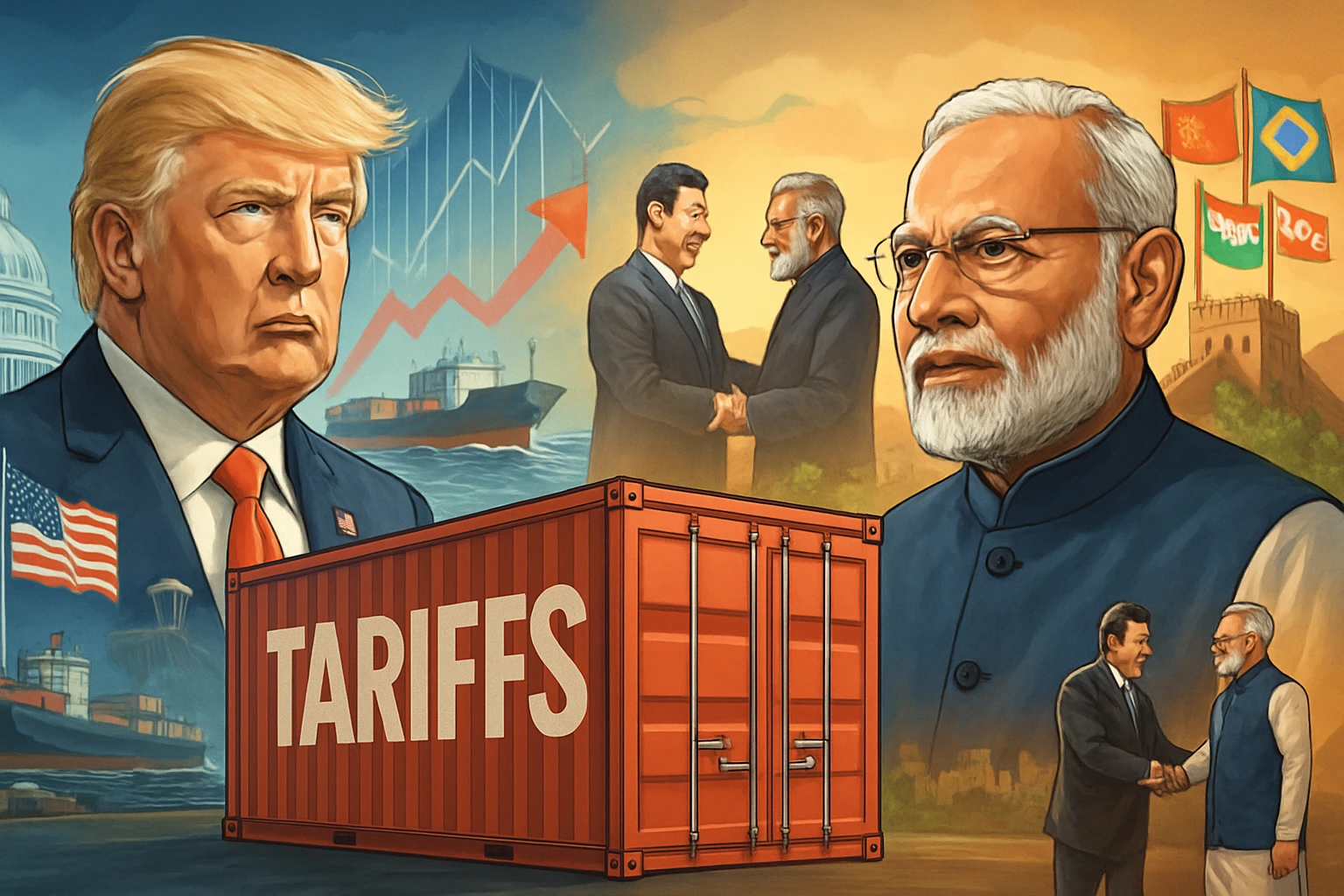In a sharp escalation of trade tensions, President Donald Trump has issued an executive order imposing an additional 25% tariff on Indian imports bringing the total to a staggering 50%. The move is a direct response to India’s ongoing purchases of Russian oil, which Trump argues undermines U.S. efforts to pressure Moscow into ending the war in Ukraine.
Why India Faces the Steepest Tariff Rate
The additional tariffs apply on top of existing trade duties, making India subject to the highest import tax rates among U.S. trading partners. Unlike China which also imports Russian oil but faces only a 30% tariff Indian goods are now at a significant disadvantage.
Trump’s administration justifies the action by accusing India of indirectly funding Russia’s war machine through resale of imported Russian energy.
India’s Response: Strong and Defiant
New Delhi condemned the decision as “unfair, unjustified and unreasonable”, emphasizing its oil imports are based on market dynamics and aimed at ensuring energy security for 1.4 billion citizens. Indian officials have reaffirmed India’s right to diversify its energy sources even as they maintain diplomatic ties with both the U.S. and Russia.
Economic Impact and Export Risk
Analysts warn that the tariffs could slash India’s export revenue to the U.S. by up to 50%, especially in sectors like textiles, leather, and marine products. Some experts suggest GDP growth could drop by 0.4–0.5% if the trade disruption continues.
However, the PHD Chamber of Commerce believes the overall GDP impact will be modest, advocating for trade diversification with alternative markets to reduce reliance on the U.S.
Strategic Fallout: Why It’s More Than Economics
• The broader context includes collapsed trade talks between the U.S. and India, despite a high-profile February summit where leaders discussed a $500 billion trade goal. Most issues were resolved, but negotiations ultimately failed over agriculture and tariffs.
• The decision has led Indian policymakers to evaluate trade ties carefully. Prime Minister Modi and key ministers are continuing diplomatic outreach with the aim to stabilize strategic autonomy while pursuing new trade routes.
At a Glance
Item | Details |
Tariff Rate | U.S. imposes 50% tariff on most Indian imports |
Reason | India’s sustained purchases and resale of Russian crude oil |
Economic Risk | Up to 50% drop in key export sectors; modest GDP impact expected |
India’s Strategy | Diversify export markets and maintain diplomatic balance |
Next Steps | U.S. review in 21 days; possible negotiation or retaliatory actions |
India’s Global Strategy: BRICS, China, and Diplomatic Balancing
India’s growing participation in BRICS the bloc of emerging economies including Brazil, Russia, China, and South Africa has been central to its push for a multipolar world order. Prime Minister Narendra Modi’s recent visit to China for the 2025 BRICS Summit was seen as an attempt to strengthen south-south cooperation while carefully navigating strained ties with Beijing. Amid rising tariffs from the United States, India’s engagement with BRICS signals a strategic shift toward diversifying economic alliances, even as tensions with China remain a sensitive issue. Modi reaffirmed India’s stance on strategic autonomy, reiterating the need to avoid unilateral pressures while upholding national interests.
Conclusion:
President Trump’s move marks the sharpest turn yet in U.S.-India relations, complicating a decade of strategic partnership. While aimed at pressuring Russia through secondary sanctions, the tariff could harm both economies and push India to realign its global trade strategy.
India now faces a difficult calculus: uphold energy independence or risk deepening economic strain from its largest export partner.




Leave a Reply